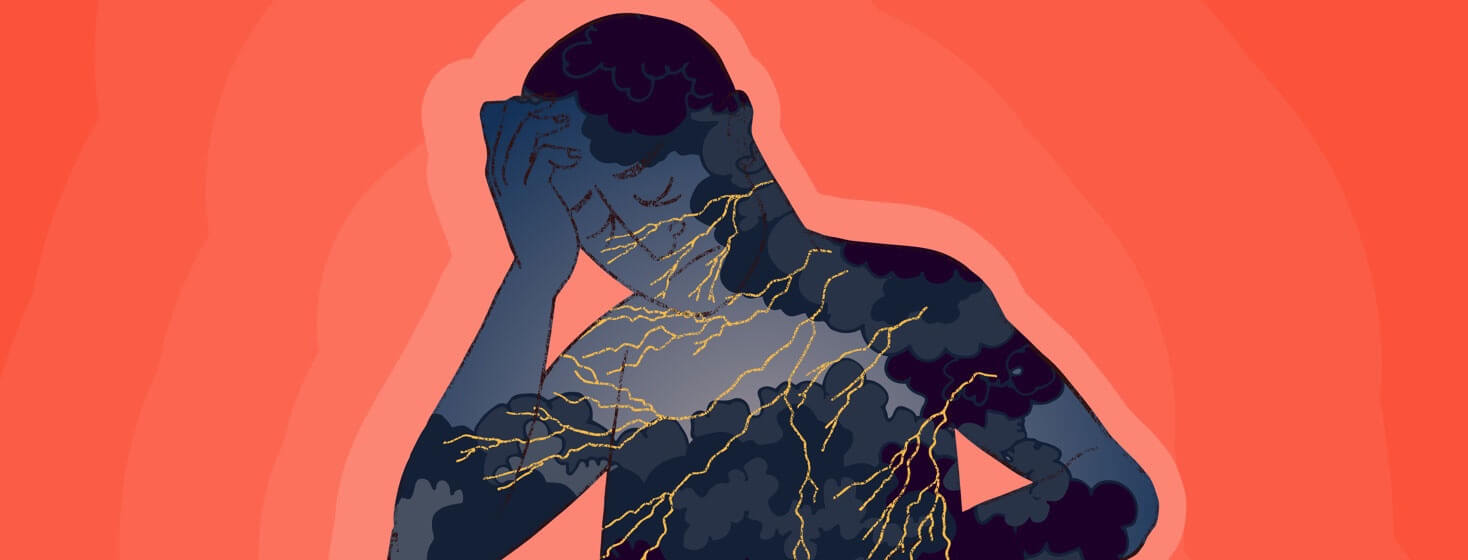Long-Term Effects of Chronic Pain
Pain is the primary reason that people with sickle cell disease (SCD) visit the emergency room. It is an extremely common symptom for those living with SCD. Pain from SCD often occurs in the back, feet, hands, and/or chest. If you have SCD, you may feel ongoing pain throughout your whole body.1,2
Types of pain
Pain typically is considered acute or chronic. Also called a pain crisis, acute pain comes on suddenly and can range from mild to severe. Acute pain lasts for less than 6 months.1,2
On the other hand, chronic pain is steady pain that lasts 6 months or more. This type of pain has long-term effects on both physical and mental health. Chronic pain affects you daily and limits the activities you can do, reducing your quality of life.1,2
Physical health effects
People with chronic pain may have trouble performing daily tasks. They may be able to sit or stand for only a short time. They often cannot lift heavy objects. Examples of tasks people with chronic pain may struggle to perform include:1-3
- Mowing the lawn or shoveling snow
- Pushing the vacuum cleaner
- Getting pots and pans out of a cupboard
- Cooking dinner
- Going shopping
- Cleaning the bathtub or sink
- Lifting laundry baskets or transferring clothes from the washer to the dryer
Mental health effects
Chronic pain also often takes a toll on mental health. People living with chronic pain may feel discouraged by the physical limitations they face. Mood changes are common, as people may think there is no hope for feeling better. In fact, those with chronic pain are 4 times more likely to have anxiety or depression.2,3
Seeking treatment may help you cope with the bleak mental pictures that can come with anxiety and depression. A combination of treatments is usually best, including:2,3
- Talk therapy – Working through feelings with a counselor or social worker
- Prescription drugs – Antidepressants and anti-anxiety drugs help manage the chemicals in the brain
- Stress-reducing methods – Activities like yoga, other exercise, journaling, and meditation
Chronic pain in the workplace
The toll on physical health often leads those with chronic pain to leave the workforce. The inability to sit or stand may be barriers to working some jobs. Taking time off for pain or treatments may affect job performance or supervisors' perceptions.2-4
For some, lack of support from colleagues and managers affects their mental health. And trying to work with chronic pain increases stress. Overall, those with chronic pain often feel less fulfilled in their jobs.2-4
Treating chronic pain
Chronic pain does not respond to typical pain management methods. Common over-the-counter and prescriptions drugs may not relieve the symptoms.1,2,5,6
That means that many people with chronic pain have a treatment plan that includes prescription opioid drugs. If you have chronic pain, your doctor will carefully weigh your need for opioids against their serious side effects. Keep in mind that there is a high risk of misuse and dependence if these drugs are not used as prescribed.1,2,5,6
Commonly prescribed opioids include:1,2,5,6
- Morphine
- Methadone
- Oxycodone (OxyContin)
- Hydrocodone (Vicodin)
Complementary treatments
Some other treatment options can benefit both physical and mental health. Pain management programs teach many ways to address chronic pain, including using some alternative therapies. Some examples of alternative therapies are:2,4,7
- Yoga
- Meditation
- Massage
- Acupuncture
- TENS unit (electrical currents to relieve pain)
- Virtual reality
Importance of personal support
Having social support makes a huge difference when you are going through life with chronic pain. Social support means having a circle of friends or family who provide comfort and encouragement.8
Support from loved ones can improve both physical and mental health. A recent study found that personal support improved the outlook of people with chronic pain. The overall mental health of those with personal support got better over time.8

Join the conversation